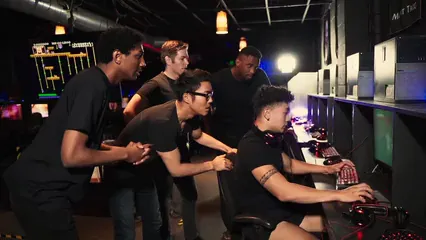Introduction
“The Price is Right” has been a beloved staple of American television since its inception. Premiering on September 4, 1972, this game show has entertained millions of viewers, showcasing contestants guessing the prices of everyday items. Its lively atmosphere and engaging format have made it a cultural icon, creating memorable moments for both contestants and audiences alike.
This article aims to provide a detailed statistical analysis of various aspects of the show. We’ll explore contestant outcomes, game performance, and financial metrics that reveal the inner workings of this fascinating game. Statistics play a crucial role in understanding the dynamics of the game and the strategies employed by contestants. From analyzing bidding tactics to understanding winning probabilities, these numbers help us appreciate the show on a deeper level.
Understanding these statistics is vital for contestants hoping to maximize their chances of success. Whether you’re a die-hard fan or considering auditioning, this comprehensive analysis will shed light on the fascinating world of “The Price is Right.” So buckle up, grab your favorite snack, and let’s dive into the numbers that make this show so enthralling!

Speaking of snacks, why not elevate your game night experience with a delightful Snack Variety Pack? It’s perfect for keeping energy levels high as you cheer for your favorite contestants!
Section 1: Overview of “The Price is Right”
History and Format
“The Price is Right” originated from a simpler concept in the 1950s. Its revival in 1972 introduced a fresh format, rapidly gaining popularity. The show’s success is largely attributed to its engaging gameplay and charismatic hosts, notably Bob Barker and Drew Carey. Over the years, the show has adapted to changing audience preferences while retaining its core essence.
The format of the show consists of several key elements. First, we have the iconic Contestants’ Row, where four contestants vie to bid on a displayed item. The contestant with the closest guess without going over wins a chance to play a pricing game. This leads us to the Pricing Games, where contestants can win additional prizes by correctly guessing prices.
Following the Pricing Games, the Showcase Showdown offers contestants a chance to win spectacular prizes. In this round, contestants spin a giant wheel, aiming for the highest score without exceeding one dollar. The top two contestants then move on to the Showcase, where they bid on luxurious prize packages. This format combines strategy, luck, and excitement, creating a thrilling experience for everyone involved.
As we explore the statistics behind “The Price is Right,” we’ll uncover patterns and trends that illuminate how these elements interact. From contestant selection to game performance, each statistic tells a story, providing insights that enhance our appreciation of this iconic game show. So, let’s roll up our sleeves and get into the nitty-gritty of how this fascinating show works!

Game Mechanics
Contestant Selection
Getting picked as a contestant on “The Price is Right” feels like winning a golden ticket! Contestants are randomly selected from the audience, which often resembles a sea of excited faces. The odds of being chosen? About 3% in a typical audience of 300 people. However, during special episodes, like the Breast Cancer Awareness special, these odds can jump to 10-20%. Why? Because many audience members are friends and family of contestants, making the pool smaller.
Recent changes in the contestant selection process are noteworthy. Since the show moved to Haven Studios in 2023, the audience capacity has been reduced from 325 to 165. This shift means fewer contestants are eligible, but it also creates a more intimate atmosphere. Contestants must be at least 18 years old, and those with previous appearances on any version of “The Price is Right” within the last decade are ineligible. So, if you’re planning to audition, brush up on your pricing knowledge and bring your best self!
Key Gameplay Elements
“The Price is Right” is packed with exciting games that keep audiences on the edge of their seats. Let’s break down a few of the major games:
- Plinko: Arguably the most famous game, Plinko involves contestants dropping chips down a peg-filled board. Each chip bounces around before landing in a slot that determines the prize amount. The excitement builds as contestants cheer on their chips, hoping for a big win.
- The Dice Game: Contestants must roll dice to guess the price of a car. They roll four large foam dice, aiming to determine if each digit in the car’s price is higher or lower than the rolled numbers. It’s a game of both skill and luck, with a win probability hovering around 50%.
- Showcase Showdown: This thrilling segment features contestants spinning a massive wheel, striving to get as close to $1.00 without going over. The top two contestants advance to bid on extravagant showcases filled with prizes. The strategy lies in knowing when to stop spinning!
Each game has its own unique rules and objectives, contributing to the overall thrill of the show. Understanding these games is crucial for contestants as they strategize their bids and gameplay to maximize their winning potential. Whether it’s the heart-pounding Plinko or the nail-biting Showcase Showdown, the mechanics of these games are designed to create an unforgettable experience for contestants and viewers alike.

If you’re looking to bring the excitement of Plinko home, consider getting a Plinko Board Game! It’s the perfect way to recreate those thrilling moments with friends and family.
Showcase Showdown Outcomes
The Showcase Showdown is one of the most thrilling parts of “The Price is Right.” Here, contestants spin a massive wheel in hopes of winning their way to the grand finale. But how often do they actually win? Statistically, contestants have about a 50% chance of winning in this segment. This dramatic moment often leads to nail-biting excitement, as the contestants aim to get as close to $1.00 as possible without going over.
In terms of monetary outcomes, the average winning amount during the Showcase Showdown hovers around $76,920, with the median coming in at $72,753. This means that while some contestants strike gold, others might find themselves walking away with less. The disparity in winnings often sparks debates among fans about strategy and luck, making the Showdown a focal point of discussion among loyal viewers.
Interestingly, the bidding strategies employed by contestants play a significant role here. The top winner in a Showcase bid often utilizes psychological tactics and careful observation of their opponents’ bids. It’s not just about luck; it’s also about timing and strategy. The best part? Each contestant gets a chance to showcase their unique approach, which adds layers of intrigue to the game.

Gender and Demographic Analysis
When it comes to the gender distribution of contestants, “The Price is Right” has seen a notable trend. Female contestants have consistently made up a larger proportion of participants, with 1,079 women compared to 702 men called to Contestant’s Row. This imbalance raises questions about accessibility and appeal, particularly in a game show setting.
Winning rates between genders also tell an interesting story. Women have won approximately 60% of the showcases, while men account for 40%. This statistic suggests that female contestants might be employing more effective bidding strategies, or perhaps they are simply more in tune with the show’s dynamics. Notably, the statistics reveal that female contestants have a higher average winning amount compared to their male counterparts.
Demographic performance patterns add another layer of complexity. Younger contestants tend to struggle in the bidding wars, often misjudging prices. In contrast, more seasoned participants, regardless of gender, tend to perform better, showcasing the value of experience in this high-stakes environment. Understanding these trends not only enriches our viewing experience but also highlights the strategic nuances that make “The Price is Right” a captivating spectacle.

Showcase Statistics
Biggest and Smallest Showcase Wins
When it comes to the thrilling world of “The Price is Right,” the stakes can be as high as a plush mountain of prizes. The largest showcase win recorded stands at a jaw-dropping $105,662, courtesy of the fabulous Hannah Williams on October 9. Not far behind, Rocco Santangelo bagged $102,479 on September 17, and Christopher Kenbeek claimed $101,604 on October 11. These staggering figures showcase just how lucrative the Showcase Showdown can be!
On the flip side of the coin, we have the smallest showcase wins. These are not quite as glamorous, but they certainly serve as a reminder that not every contestant leaves with a fortune. Patricia Buell walked away with a mere $505 on May 2, while Loryn Hill and Mary Carmen Rodriguez followed closely, with wins of $520 and $530, respectively.
Interestingly, a pattern emerges from these wins. Contestants who bid conservatively may sometimes win smaller showcases, while those who go bold often snatch the bigger prizes. The psychological game of bidding creates a fascinating landscape where strategy meets luck.

Total Earnings and Prize Distribution
Now, let’s crunch some numbers! Over its extensive run, “The Price is Right” has dished out a staggering total of approximately $14,614,807 in prizes. The average winnings per episode hover around $76,920, with a median of $72,753. That’s a lot of cash for contestants to fight over!
Prize distribution is equally intriguing. Each season, the variety of prizes includes everything from cars to lavish vacations, appealing to contestants and viewers alike. The distribution of winnings often reflects contestant strategies, where those who adopt a more aggressive bidding style tend to secure larger prizes.
For instance, contestants who confidently assess their competition’s bids and strategically place their own tend to walk away with more substantial showcases. In contrast, those who play it safe might find themselves clutching smaller prizes. It’s a game of calculated risks, with the potential for grand rewards—or modest takeaways.

Optimal Strategies
Winning on “The Price is Right” isn’t just about luck; it involves strategy. Contestants can significantly enhance their chances by understanding historical data and outcomes.
First, pay attention to the auction dynamics. Statistically, the fourth bidder has the highest win rate at approximately 41.5%. This advantage arises because they can gauge previous bids, allowing a more informed final offer.
Next, focus on the Pricing Games. Games like Plinko and the Dice Game often have predictable outcomes. Knowing the average winning amounts and probabilities can guide your choices. For instance, in the Dice Game, guessing whether digits are higher or lower based on the rolled numbers can lead to a win rate close to 50%.
Moreover, it’s wise to bid conservatively in Contestants’ Row. If you’re the last bidder, aim to undercut the highest bid by just $1. This tactic often secures the win and advances you to the next round.
Lastly, practice makes perfect! Watching previous episodes and familiarizing yourself with game mechanics can sharpen your skills. Contestants who study past games typically perform better.

Armed with these strategies, future contestants can approach the show with confidence. And speaking of confidence, why not host your own game night? Check out this Game Night Snack Box to keep everyone fueled and ready for some friendly competition!
The Importance of Statistics in Decision-Making
Statistics play a crucial role in decision-making, especially in uncertain environments. Just as they guide financial investments or health choices, statistical insights can shape how contestants approach “The Price is Right.”
When faced with uncertainty, data analysis provides a clearer picture. For instance, understanding the odds of winning specific games can influence bidding strategies. Similarly, in finance, knowing market trends can guide investment decisions.
In both scenarios, being informed reduces risk. Contestants who analyze statistics are more likely to make strategic bids, enhancing their chances of success. This approach mirrors decision-making in health, where statistical data can help individuals weigh treatment options.
Overall, statistics empower contestants to make smarter choices, whether in game shows or real-life situations. For those preparing for the AP Statistics exam, a solid understanding of statistics is essential. You can find helpful resources in this AP Statistics formula sheet to ace your exam.

Understanding statistics can greatly enhance your decision-making skills, whether in game shows or academic pursuits. Check out this AP Statistics formula sheet for valuable insights.
Conclusion
The statistical analysis of “The Price is Right” reveals fascinating insights into game dynamics and contestant performance. Understanding optimal strategies, as highlighted earlier, is vital for anyone looking to improve their chances on the show.
Statistics indicate that the fourth bidder often comes out on top, emphasizing the importance of timing and observation. By leveraging this knowledge, contestants can make informed decisions that enhance their potential for success.
Moreover, financial metrics show that prizes can vary significantly, with average winnings per episode reaching around $76,920. This underscores the lucrative nature of the show and the need for strategic bidding.
Statistics also highlight the importance of demographics. The gender distribution of contestants suggests that women tend to win more showcases, perhaps indicating different strategies at play.
In summary, the insights gathered from this statistical exploration are invaluable. They not only enhance our understanding of “The Price is Right” but also illustrate the broader significance of statistics in decision-making. Whether you’re watching for entertainment or preparing to participate, consider these insights to maximize your experience and strategies.

FAQs
What is the average winning amount on “The Price is Right”?
The average winning amount on “The Price is Right” varies by game type. Statistically, contestants win about $76,920 per episode. However, this amount can fluctuate based on the prizes offered and the games played. For example, the Showcase Showdown often yields higher winning amounts due to its nature, where contestants bid on luxurious prizes.
How are contestants chosen for the show?
Contestants are selected randomly from the audience. Each episode usually features around 300 audience members, with only nine being called down to Contestants’ Row. This selection process can be competitive, as many audience members are eager to participate.
What strategies can increase a contestant’s chances of winning?
Several strategies can enhance a contestant’s odds. First, bid last when possible to gauge previous bids. Second, focus on games with higher win rates, like Plinko. Finally, practice bidding conservatively during auctions can maximize chances of winning.
Are there specific games that are more likely to be won than others?
Yes, certain games have better odds. For instance, the Dice Game has a win probability close to 50%. Conversely, games like Pay the Rent may yield lower win rates due to their complexity. Understanding these probabilities can help contestants strategize effectively.
How does the show ensure fairness in gameplay?
“The Price is Right” maintains fairness through strict rules and oversight mechanisms. Each game follows predefined rules, and all outcomes are determined by chance or contestant decisions. Additionally, an independent auditing process verifies the integrity of prize distributions and gameplay.
Also, if you’re planning a game night, consider adding a Party Games for Adults Book to keep the fun going with engaging activities!
Please let us know what you think about our content by leaving a comment down below!
Thank you for reading till here 🙂
All images from Pexels




